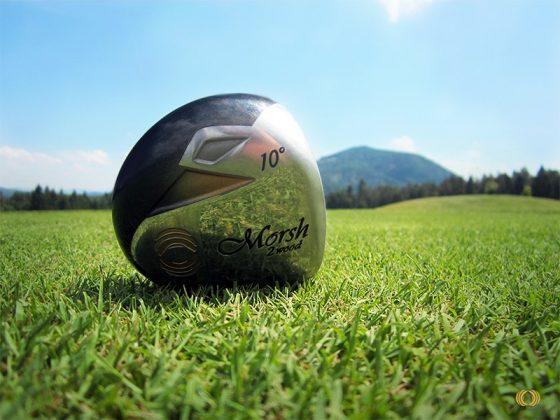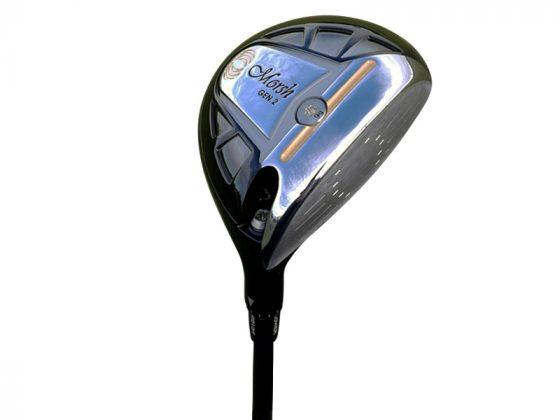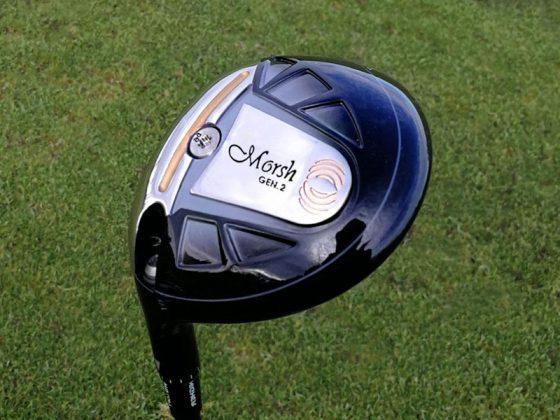Bellow you will find a list of the best 2 woods and their alternatives I could possibly find on the internet. If you know for any other great 2 wood or any alternative let me know in the comments below, I would love to find more about it 😉
Various Fairway Wood Options
With advanced technology and improvements in materials, the fairway wood (including a 2 wood) has become the go-to and most versatile club in a golfer’s armory.
I talk about versatility because great fairway woods can provide accuracy and distance off the tee, help you reach long par fours and par fives in two shots, to set up your birdie and eagle opportunities.
In addition, if you can master a 12 degree fairway wood, it can be a highly effective club for those tricky up and down chip shots around the green.
Most golfers know the kind of drivers and irons they prefer, but fairway woods always take a bit more thought.
Many golfers are beginning to move away from the traditional big-headed drivers for the smaller-headed 2 woods or strong 3 woods.
The best driver alternatives and fairway 2 woods are tricky to find. But when you manage to get one that gives you the distance and accuracy off the tee and still enables you to hit bombs from the fairway, I know you’ll want to hang onto it.
The 13-degree 3 Wood is often hailed as a versatile alternative to the traditional 2 Wood. This club combines the benefits of fairway wood design with a degree of loft that promotes higher launch and enhanced playability from various lies. With a 13-degree loft, this 3 Wood offers an ideal balance between distance and control, making it a popular choice among golfers seeking flexibility in their shots.
The 13-degree 3 Wood shines in various scenarios, offering golfers the ability to tackle a range of situations on the course with confidence.

It has always been hard for me to let go of my favorites, but clubs get old, new technology takes over, and no matter how reluctant I am, it’s got to get done.
This article will discuss the best 2 woods and their alternatives and put you right up to date with the latest and best driver alternatives and strong 3 woods.
Although I’m a founder of Morsh Golf, I do my best to be objective and give you an honest overview off all the alternatives on the market. To know more about 13 degree 3 wood golf club, consider speaking with our experts.
Best 2 Woods
Should you be looking for a 2-wood as a driver replacement but still excellent from the fairway, here are the clubs that deserve a slot in your golf bag.
Morsh Golf 2-wood
There’s little point hitting bombs off the tee if you end up in the rough or buried in a fairway bunker. What if you could find the fairway for most tee shots without sacrificing much distance?
Among other things, that’s what Morsh Golf’s 2-wood will bring to your game.

Loft: 10.5 degrees
Volume: 183cc
Length: 43.5 inches
Swingweight: D3
Dexterity: Right/Left-handed
If you’re getting twitchy about the size of you’re driver’s clubhead when you’re about to tee off, then the Morsh 2-wood’s 183cc clubhead means you can swing the club just like a 3-wood without losing out on much distance; what you lose in length, you’ll gain back in accuracy.
For me, the head size of most drivers doesn’t appeal, and I thoroughly enjoy hitting the Morsh 2-wood off the tee.
Feedback from any club is crucial, and the quality stainless steel manufacture produces a soft feel and all the feedback you’ll need.
With a 10.5-degree loft angle, you’ll be able to also hit the ball longer off the fairway than you ever dreamed possible; it just takes a little practice.
Morsh Golf shafts are made explicitly for the 2-wood, and because of the mid-to-low kick point and a shaft length of 43.5 inches, you’ll naturally hit the ball on a higher trajectory; imagine hitting those greens that no matter how hard you tried, you’ve never reached.
If you enjoy personalizing your clubs, we got you covered. You can quickly adjust the club’s loft from 10.5 to 12.5 degrees, or you can go down to 8.5 degrees if you need those anti-wind shots 😉 . In addition, if you like to feel the club’s weight ensure through the swing, you can alter your club’s swing weight with four weight screws: 3, 6, 9, and 12 grams.
PXG 0341x 2-wood

Image credit – PXG golf
Loft: 13 degrees
Volume: 212cc
Length: 43.5 inches
Lie angle: 57.5 degrees
Dexterity: Right-handed
According to the PXG’s website, the 0341 X Gen2 fairway woods are low-spin clubs that offer prodigious distance from the tee and fairway. In addition, this fairway wood features a carbon fiber crown and weight-forward design. The combination of these two factors helps to reduce energy loss leading to increased ball speeds.
If you need less loft or more, the adjustable hosel will allow you to change the loft by 1 1/2 degrees, either way.
Having a carbon fiber crown reduces 14 grams from the top of the clubhead, which the manufacturers redirect into the club’s sole; in turn, this lowers the center of gravity to ensure an optimum ball flight. Additionally, you can fine-tune the launch conditions further with the precision-weighting technology by adjusting the club’s eight weights.
Thomas Golf 2-Wood

Image credit – Thomas Golf
Loft: 12 degrees
Volume: 200cc
Length: 45 inches
Lie angle: 56 degrees
Dexterity: Right-handed
The Thomas Golf 2-wood incorporates a highly effective alignment system. The top-plan ensures the aim is level with the ground; by doing this, golfers can be sure the indicator is parallel to the target line.
The benefits to the golfer are immense because it ensures the triple accuracy of lie, direction, and loft. In addition, flattening the top in this way offers a larger hitting area for off-center golf shots. This is good for average golfers because even when you hit a terrible shot, the club is more forgiving.
Most fairway woods have a domed shape which is a throwback to the days of actual wooden clubs. Thomas Golf’s 2-wood’s flat top-plane eliminates the clubhead flexing, keeping energy in the clubface, which is then transferred to the ball; in other words, no power is lost by a flexing golf club frame.
Cobra Long Tom

Image credit – Cobra Golf
Loft: 12.5 degrees
Volume: 240cc
Length: 45 inches
Lie Angle: 57 degrees
Dexterity: RH/LH
The Cobra Long Tom is excellent off the tee and offers practically the exact distances you will get with your driver, but with added accuracy.
Even off the deck, you’ll find it easier to hit than you thought possible. The club has a tall face and a 45-inch shaft, so it shouldn’t be as good as it is from the fairway, but the Long Tom has a deep front-to-back design which means it’s pretty easy to get the ball in the air.
If you prefer your woods to have a larger club head size, then you’ll love the 240cc volume on the Long Tom; add in the extra forgiveness by Cobra’s E9 face technology, and you’ll be hitting the ball long and straight.
Mini Drivers
Taylormade 300 Mini Driver

Image credit – TaylorMade Golf
Loft: 11.5 and 13.5 degrees
Volume: 307cc
Length: 43.75 inches
Dexterity: RH
The rising popularity of the mini driver continues with the Taylormade 300 Mini Driver. According to TaylorMade the TM 300 mini driver comes in two options – 11.5-degree or 13.5 degree mini driver, but you can adjust that up or down by 2 degrees utilizing the 12-position adjustable hosel.
As per all Taylormade drivers, the mini driver has Twist Face technology and includes a speed pocket that helps increase the flex of the golf club’s face, allowing more accurate lower face hits. The club has a carbon fiber crown, titanium body, and a heavy steel soleplate.
Callaway Bertha Mini 1.5 Driver

Image credit – Callaway Golf
Loft: 12 & 14 degrees
Volume: 235cc
Length: 44 inches
Dexterity: RH/LH
The Callaway Bertha Mini 1.5 sits directly in the middle of a driver and 3-wood. The 235cc club head is 30 to 40% larger than a 3W, which means it will be more forgiving off the turf, but with a shorter shaft (44-inch) than the average driver, off the tee, you’ll be landing your ball down the center of the fairway more often.
Callaway has also taken their driver’s forged composite crown and their fairway wood’s forged hyper speed face cup technology and added both to the mini driver 1.5. This full-package design distributes the weight around the club’s perimeter to maintain ball speed even on off-center hits; the result of all this technology is a more forgiving and easier-to-hit golf club.
The Callaway mini driver 1.5 features a low center of gravity for higher ball launches. In addition, a brilliantly named Warbird cambered sole allows the club to slide through the turf effortlessly.
Strong 3-Woods
Callaway Golf 2021 Epic Max Fairway Wood

Image credit – Callaway Golf
Loft: 13.5 degrees
Volume: 173cc
Length: 48 inches
Dexterity: Right and Left-handed
According to the information from Callaway, their Epic Max golf club sports one of the company’s most forgiving head shapes and shallow profile. For the average golfer, this is brilliant because it makes it easy to launch the ball. In addition, with an adjustable weighting system where you can alternate between 2g and 14g weights at the back and front of the club, you can fine-tune the ball’s spin and launch.
Callaway fairway clubs feature the AI-designed Flash Face SS21, which helps maintain optimum ball speeds for off-center hits and more forgiving across the club’s face. Many club golfers hit low on the face with fairway shots, and the Callaway’s C300 maraging steel face helps increase flex and speed for these types of shots.
Ping G400 Stretch 3-Wood

Image credit – Ping Golf
Loft: 13 degrees
Volume: 193cc
Length: 43 inches
Lie angle: 56 degrees
Swingweight: D2
Ping has designed the G400 Stretch to offer club golfers more distance off the tee when they prefer a strong 3-wood to a driver. But equally crucial is the club’s ability and forgiving nature when it comes down to fairway shots.
Hitting a 3W off the tee is now de rigueur for many club golfers; when you require accuracy and consistent ball striking, the 3W is the only way to go. However, most golfers worry about the distance they’re going to lose. If this is you, then the beefed-up Ping G400 could be your next best friend.
The Ping Stretch is an extremely capable club off the fairway; however, it’s not advisable for average golfers with problems with fairway woods, especially if they have a slower swing speed. My swing speed’s not too bad, and I didn’t have any issue hitting it off the turf.
Honestly said, looking down at the Ping G400 at the address, the club’s top looks excellent with its matte black crown and Ping’s leading-edge turbulators.
Taylormade SIM2 Rocket 3

Image credit – TaylorMade Golf
Loft: 14 degrees
Volume: 170cc
Length: 43.25 inches
Lie Angle: 56.5-60.5 degrees
Swingweight: D3
The Sim2 Rocket 3 provides versatility for club golfers knowing they have a strong 3-wood in their bag that can be hit off the tee and equally off the turf. TaylorMade delivers much better forgiveness by refining the club’s weight distribution and maintaining the optimal launch trajectory.
The Sim2 Rocket is engineered with premium materials; for example, flexible ZATECH titanium provides a much hotter launch. By pairing the material with TaylorMade’s Twist Face, you’ll see better accuracy on mis-hit shots. When you use this golf club, you’ll experience a longer distance, and the ball will invariably go where you intended it to go.
If you feel you need to adjust the ball’s trajectory, the club is available with an adjustable loft sleeve that provides + or – 2 degrees of loft.
Conclusion
Golf club manufacturers have a real challenge on their hands attempting to balance the need for driver-like speed and forgiveness but with the ability to slice through the turf to ensure your ball gets close or, even better, on the green.
If you check out our list of best 2-woods and strong 3-woods, such as the Morsh Golf 2 Wood, you’ll see that manufacturers are doing a brilliant job.
Now that it appears golf club manufacturers are distancing themselves from the one-size driver for all golfers, fairway woods are also moving in the same direction. Offering golfers different lofts and the ability to personalize their woods even more.
I hope you enjoyed the article. I tried to be as objective as possible, although my favorite club will always be our 2 wood 🙂
Let me know in the comments if you tried any of these clubs and what’s your opinion.





tried the rocket ,, felt like hard work,, I hit it side by side with my old ,Bazooka 3 wood with a45g R flex,, longish shaft,
TM Sim 2 Rocket,,
Best drive=238 m.
Average distance = 219
My Bazooka, 3 wood,,
Best drive 260m
BEST WIND ASSIST= 293m
Average dist:=240m
needless to say I didn’t by the Sim2..
Haven’t tried the others yet..